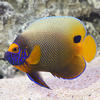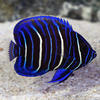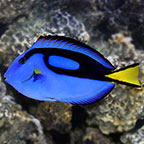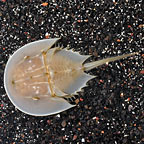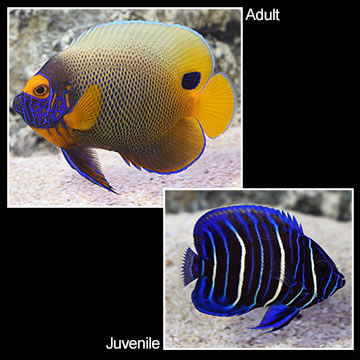
Additional locales and sizes may be available!
Additional locales and sizes may be available! Email me when availableQuick Stats
What do these Quick Stats mean? Click here for more information
What do these Quick Stats mean? Click here for more information
Overview
A minimum of a 220 gallon tank with numerous hiding places and large amounts of live rock for grazing will offer a good environment. Not a good reef dweller, the Blueface Angelfish is prone to nip at stony and soft corals (sessile invertebrates) and clam mantles. The Blueface Angelfish is best kept as the only angelfish, as it is prone to becoming territorial when it is the largest fish in the tank.
The diet should consist of Spirulina, marine algae, high-quality angelfish preparations, mysis or frozen shrimp, and other meaty items. It should be fed at least three times daily.
Approximate Purchase Size: Juvenile Small: 1" to 2"; Medium: 2" to 3-1/2"; Large: 3-1/2" to 4-1/2"; Sub Adult Small: 1" to 2"; Medium 2" to 4"; Large 4" to 6"; Adult Small: 1-1/2 to 2-1/4"; Small/Medium: 2-1/4" to 3-1/4"; Medium: 3-1/4" to 4-1/4"; Medium/Large: 4-1/4" to 5-1/4"; Large: 5-1/4" to 6-1/4"; XLarge: 6-1/4" to 7-1/2"



